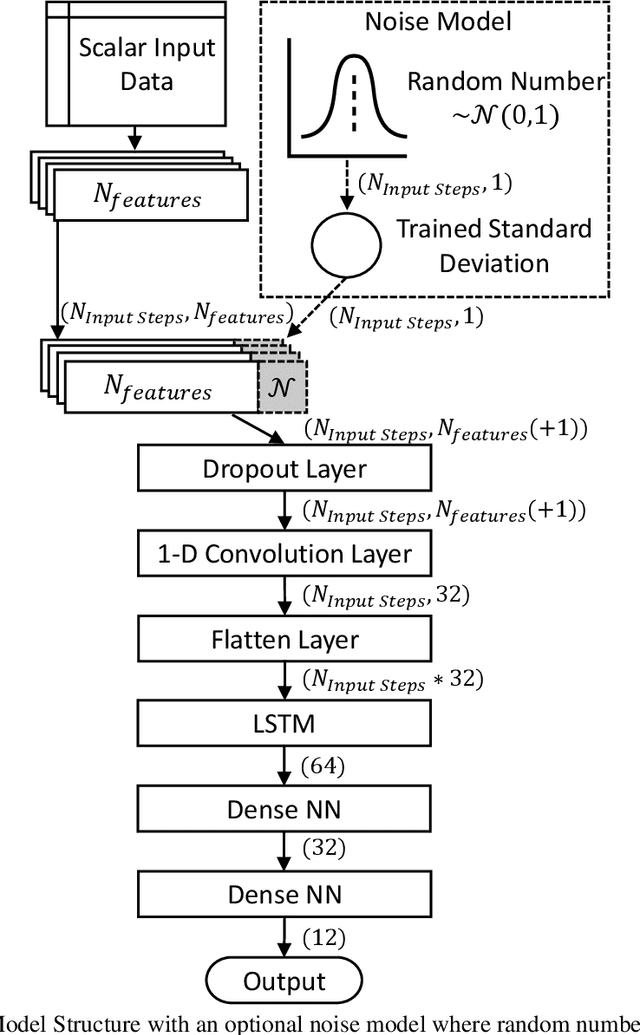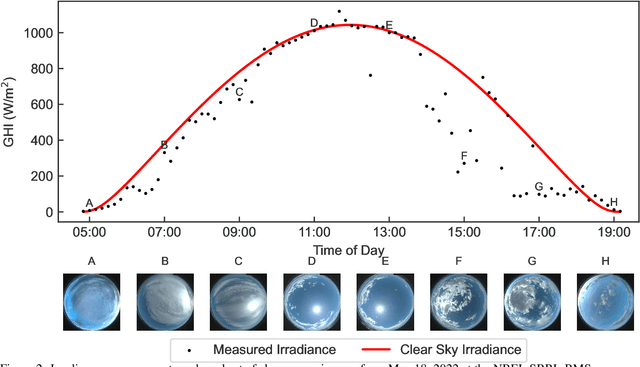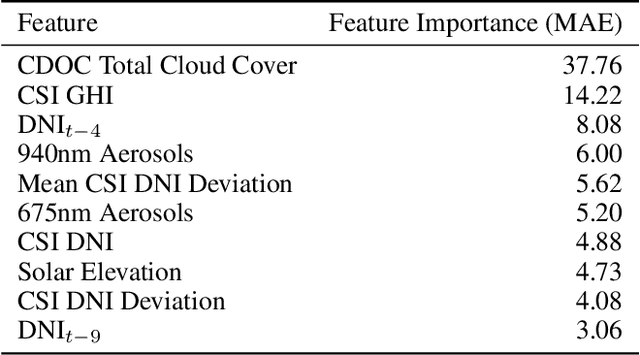Ricardo A. Lara Orozco
Hildebrand Department of Petroleum and Geosystems Engineering The University of Texas at Austin
Short-Term Solar Irradiance Forecasting Under Data Transmission Constraints
Mar 19, 2024



Abstract:We report a data-parsimonious machine learning model for short-term forecasting of solar irradiance. The model inputs include sky camera images that are reduced to scalar features to meet data transmission constraints. The output irradiance values are transformed to focus on unknown short-term dynamics. Inspired by control theory, a noise input is used to reflect unmeasured variables and is shown to improve model predictions, often considerably. Five years of data from the NREL Solar Radiation Research Laboratory were used to create three rolling train-validate sets and determine the best representations for time, the optimal span of input measurements, and the most impactful model input data (features). For the chosen test data, the model achieves a mean absolute error of 74.34 $W/m^2$ compared to a baseline 134.35 $W/m^2$ using the persistence of cloudiness model.
 Add to Chrome
Add to Chrome Add to Firefox
Add to Firefox Add to Edge
Add to Edge